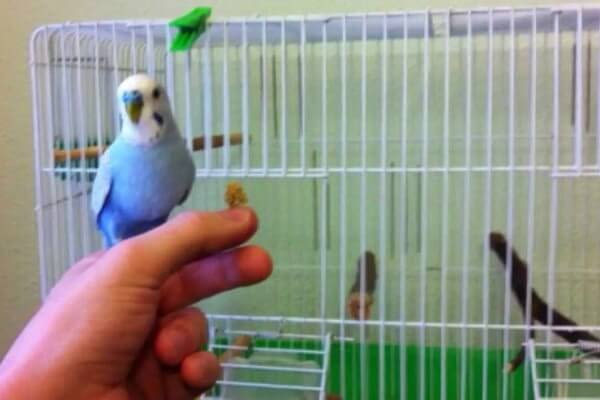
Birds are very intelligent animals and make good pets. Fortunately, taming a bird is not a difficult task.
However, it requires a lot of time and patience and by taming the bird, not only does a closer bond develop with it, but it also helps it to feel more comfortable and secure with its environment.
In previous articles we have already pointed out how to gain the bird's confidence, get used to his hands and teach him how to climb his finger inside the cage. The basic final process is to teach you to get out of the cage, to feel comfortable with the environment in contact with the human.
4. TEACH THE BIRD To GET OUT OF THE CAGE
Prepare a bird-proof room.
Teaching the bird to get on the finger when it is outside the cage is important to tame it.
A bird-proof room is one in which the bird feels safe and secure and must be bright, tidy and clean.
To prepare the room, close the windows and blinds. In addition, the room should be free of pets and other hazards, such as fans.
It would be ideal for the room to have a door that can be locked so that no one can enter during training sessions.
If necessary, reorganize the cage.
The cage is your comfort zone. Getting out of that area could be a terrifying experience for him; the intention is not to make the most frightening experience by having to navigate through several hangers and toys.
It is advisable to take the time necessary to remove any obstacles from the road.

Remove the bird from the cage.
When the bird is placed on the finger in the cage, gently move the hand back to remove it.
Don't be surprised if you fly and get off your finger when you try to pull it out; you may not be ready to leave the cage safe. If you do that, you will not be pursued inside the cage.
If the cage door is large enough, insert the other hand and hollow it out behind the bird. The other hand will serve as a shield to prevent the bird from jumping out of the finger, but it won't actually touch it.
He should not be forced out. It is essential to be patient with it. It may take several days of training before you feel comfortable getting it out.
Give it time to adapt to the outside.
The bird may want to jump immediately out of the cage. Again, you should not be chasing with your finger if you do that. Wait patiently until it has been established before the finger is raised again.
You could fly away when you take it out, so it's important to approach slowly and gently to recover, speaking in a calm, comforting voice.
Reward the bird with a prize when it is on the finger again.
The daily practice sessions should be kept short (10 to 15 minutes).

Try to get the bird to climb on the finger in the birdproof room.
We have already mentioned it at the beginning of the article. When the bird feels comfortable outside the cage, walk to the birdproof room with its back to the cage.
When you are in the room try to sit down. If you jump your finger, make it rise again.
To challenge the bird, use both hands as innkeepers. When the bird is over the index finger of one hand, use the index finger of the other hand to gently press the area where the bird's chest begins and make it rise. Alternate hands and move the innkeepers of their fingers ever higher to simulate climbing a ladder.
Offering a reward, practice with the bird in a bird-proof room for 15 to 20 minutes, one to several times a day.
Back to the cage.
After each training session outside the cage, slowly return him to his cage.
Although you may want to fly to get out of your hand when you're back, try placing it back in one of your innkeepers. To do this, place your finger so that the innkeeper is in front of the bird and higher than the hand.
When you stand at the innkeeper, give him the verbal command "get off." Even if you get on the innkeeper, that action is still considered as getting off your finger. Close the cage door when the bird settles inside it.



